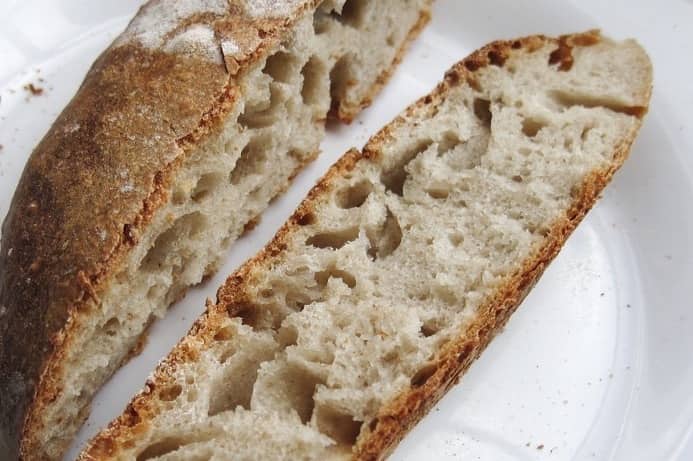
It isn t unusual for sourdough recipes to need 24 hours or more of total rise time. It also takes longer for sourdough starter to rise.

It s cool in our house so i think this is why it took longer sourdough.
Sourdough starter vs yeast. Recipes likely call for yeast as well as a way to guarantee that home bakers end up with the result they wanted. The best of both worlds. One hack for a reliable sourdough starter might be to spike the mixture with commercial yeast olson says and deliver some of its leavening power to the microbe mixture.
The differences between fresh and dry yeast and sourdough starter are as follows. Most yeast comes ready to use right out of the packet whereas with a starter you must wait several days or weeks before you can use it to bake bread. You need to continually care for a sourdough starter while yeast needs much less tending to.
When baking with sourdough starter a much larger amount is needed in order to effectively rise the dough. Think around 1 cup as opposed to the 2 teaspoons of active dry yeast. It also takes longer for sourdough starter to rise.
It isn t unusual for sourdough recipes to need 24 hours or more of total rise time. This bread took about 12 hours to rise as the recipe stated. This was done in two stages with an eight hour rise in the bowl followed by a four hour rise in the pan.
It s cool in our house so i think this is why it took longer sourdough. This bread took 24 hours to rise also in two stages. First sourdough yeast grow best in acidic doughs while baker s yeast does better in neutral or slightly alkaline doughs remember that for reducing phytate content acidic condition are important if not the vital part to the equation.
Natural yeast was coined by melissa richardson who wanted to develop a method of using sourdough without the high maintenance. When she began storing her starter in the fridge and feeding only every 3 4 days instead of every day natural yeast was born. So is the float test a good way to assess the rise of yeast dough or baking readiness of sourdough starter.
Both partially risen yeast dough and growing but not yet ripe starter will float in water. If rising yeast dough or fed sourdough starter sinks in water it s definitely not ready to continue to the next step in your recipe. Yeast that live on lentils behave very differently than the yeast that are used to brew sake for example looking for a reputable sitter for my sourdough starter for july.
Instant quick rise or even regular yeast is packaged as a single species of yeast though different producers might have different varieties that digests carbohydrates in the dough and make carbon dioxide bubbles and a teeny bit of alcohol. Then when the bread dough is mixed and kneaded i ll follow the rest of the recipe with a few necessary changes. A natural starter works its magic at a much slower pace than commercial yeast thereby fostering the development of desirable flavor components so i ll allow for a longer resting time than stated in the yeast based recipe.
Sourdough leavened doughs also ferment during a single rise with absolutely no punching down so the method may have to be modified in that regard.